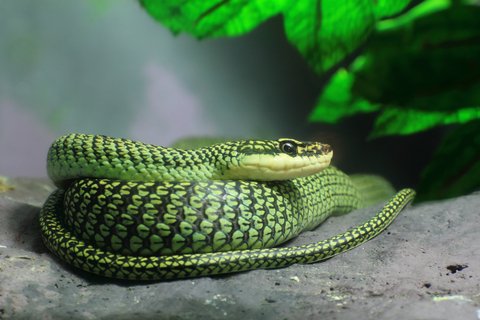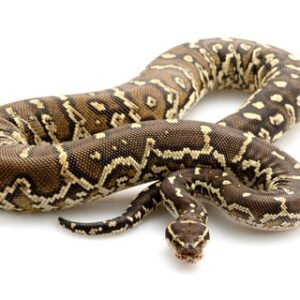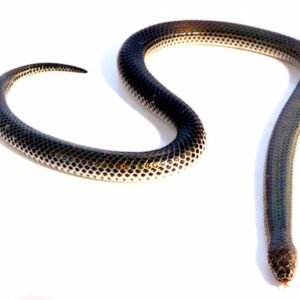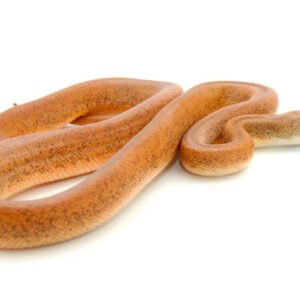Physical Characteristics and Habitat
The ornate flying snake, scientifically known as Chrysopelea ornata, exhibits a remarkable array of physical characteristics that distinguish it from other snake species. Typically, it measures between 1.5 to 2.5 meters in length, making it relatively slender and elongated compared to more robust snakes. Its body is adorned with vibrant color patterns that usually incorporate shades of green, yellow, and black, aiding in camouflage against the lush foliage of its habitat. This coloration not only enhances its aesthetic appeal but also serves as a mechanism for hiding from potential predators.
One of the most intriguing features of the ornate flying snake is its unique anatomy, which has evolved specifically to facilitate gliding. Unlike terrestrial snakes, its ribs can be extended laterally, creating a flattened body profile that enhances air displacement. This innovative structure allows the snake to glide gracefully from tree to tree, covering distances of up to 100 meters in a single glide. Moreover, its highly flexible body and ability to control its movement mid-air contribute to its overall maneuverability while navigating the treetops.
The habitat of the ornate flying snake predominantly consists of tropical forests across Southeast Asia, including regions in countries like Thailand, Malaysia, and Indonesia. These environments provide a rich tapestry of trees and undergrowth, which offer both shelter and abundant prey. The snake often inhabits the canopy, where it can effectively hunt for small birds and lizards while evading larger predators. Its behavioral adaptations, such as remaining motionless to blend into its surroundings, ensure its success in these complex ecosystems. Understanding the physical characteristics and habitat of the ornate flying snake underscores its intricate relationship with nature, showcasing its role as a remarkable gliding creature in tropical ecosystems.
Gliding Mechanism and Behavior
The ornate flying snake, known scientifically as Chrysopelea ornata, exhibits remarkable gliding abilities that enable it to navigate its arboreal habitat efficiently. This species has evolved a unique gliding mechanism that involves several morphological adaptations. When preparing for a glide, the snake launches itself from a height, usually a tree branch, utilizing its agility and strong muscles to propel its body into the air. This initial phase of the glide is crucial, allowing the snake to maintain momentum before engaging its aerodynamic features.
One of the most intriguing aspects of the flying snake’s gliding behavior is its ability to flatten its body. By expanding its ribs and forming a wing-like shape, the snake increases its surface area, which enhances lift as it glides through the air. Research indicates that this flattening action can increase the duration and distance of the glide, showcasing the snake’s sophisticated adaptation to its environment. Ornate flying snakes can cover distances of up to 100 meters, demonstrating an impressive grasp of aerial navigation that aids in avoiding predators and accessing new feeding grounds.
In addition to evading threats, the flying snake employs its gliding skills during hunting. They are primarily arboreal hunters, preying on small vertebrates, including lizards and birds. By gliding stealthily from branch to branch, they are able to ambush unsuspecting prey from above. Furthermore, their unique adaptations extend into reproductive behaviors. During mating rituals, males may exhibit gliding maneuvers to attract females, affirming that these adaptations play a crucial role in both survival and reproduction. The care for young also highlights the importance of their gliding mechanism, as they transport hatchlings between trees, ensuring their safety and access to food.





